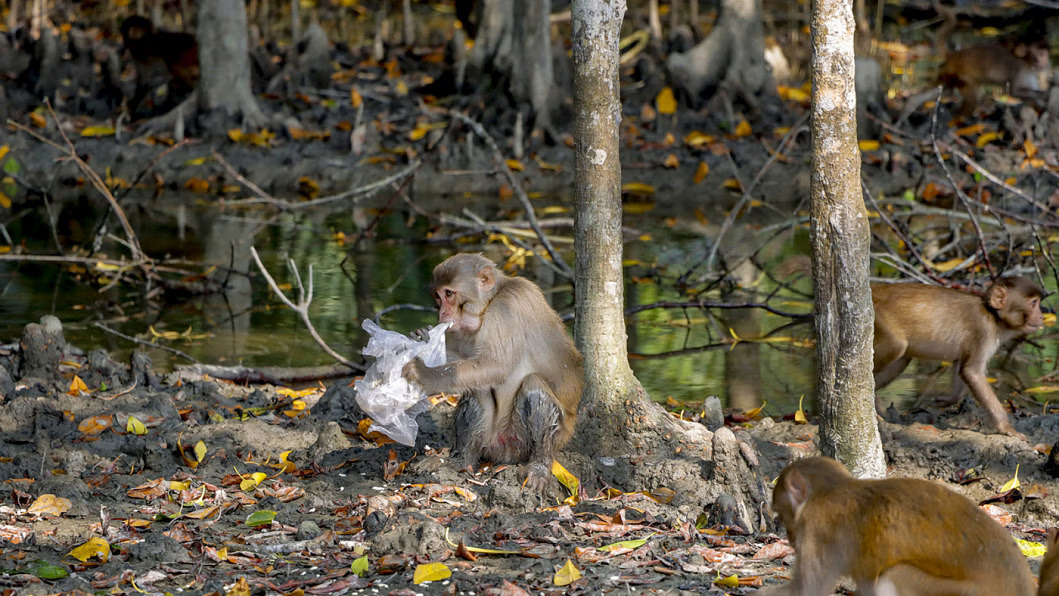Biodiversity conservation requires more than just frameworks

In the conservation arena, we monitor biodiversity for many reasons. For example, a group of wild animals or plants is monitored over a period of time to track their changes. Wildlife watchers all over the world do that very often and make biodiversity databases rich. In Bangladesh, we don't do that for many species, but migratory birds are a popular exception and annual counting of these species has been taking place since 1987. It is done in winter months in riverine chars, beels and haors of the north as well as on the south coast, thanks to many individuals and organisations, including Bangladesh Bird Club. Thanks to the monitoring, we learned that 60 percent of 39 waterbird species have declined in Tanguar Haor in Sunamganj during 2008-2021, as per a recent study.
Only regular monitoring can confirm whether a conservation effort is working or not. Wildlife monitoring took place under conservation projects, such as USAID-supported Nishorgo, Integrated Protected Area Co-management (IPAC), and Climate Resilient Ecosystems and Livelihoods (CREL). Wetland Biodiversity Rehabilitation Project (2009-2016) of Department of Fisheries and GIZ/Germany did something rare. It involved the International Union for Conservation of Nature to monitor the biodiversity in Pabna and Natore districts for two years (2014-2016) and then track the biodiversity changes, after the end of major project activities. IUCN, however, missed the opportunity to monitor biodiversity in the Swiss Government-funded Tanguar Haor project (2006-2016). During the project tenure, it could only publish the baseline data of amphibians, reptiles, birds and mammals (in 2012), plants (in 2012), and fish (in 2015) of this globally important wetland. There was a follow-up project funded by the Government of Bangladesh (2017-2018), where the main thrust was on governance, rather than on biodiversity.
Projects often establish a baseline for wildlife. The Strengthening Regional Cooperation for Wildlife Protection (SRCWP) project, for example, did that for Asian elephants and vultures. But follow-up initiatives are not usually taken to use such data. The case of the Bengal tiger is a bit different, where regular surveys are done under different donor or government programmes to estimate the total tiger number. A 2015 survey estimated 106 tigers in Bangladesh's Sundarbans, while a survey in 2018 estimated 114 tigers. The latest survey (2024) data shows there has been a slight increase and the new total tiger number is between 120 and 125.
In 2014, the tension between the government and the UNESCO's World Heritage Committee (WHC) became quite public over the Rampal Power Plant and other issues. Since then, one of the strong recommendations the WHC made to Bangladesh was to conduct ecological monitoring of this mangrove. Back in 2016-2017, an attempt was made by the forest department to initiate preliminary ecological monitoring of the Sundarbans based on primary and secondary information. After many interactions and iterations, the forest department and IUCN prepared the Methodological Framework for Ecological Monitoring of the Sundarbans (2023) under the GIZ-supported Sundarbans Management Project (SMP) II. The document was made public in July 2024.
This 192-page-long document was prepared by a group of 13 esteemed Bangladeshi experts from diverse disciplines, supported by five reviewers from the forest department. The core element of this framework is identifying an exhaustive list of suitable indicators to monitor. Biological indicators include 46 species of plants and animals, which are classified into 11 categories, while physical-chemical indicators include 17 parameters arranged in three categories. Detailed data collection, data management, and reporting protocol for each category are described in this framework. This description is followed by a detailed account of how to establish a spatial decision support system (SDSS) for the Sundarbans by data visualisation of the results produced on the above indicators.
While this framework is a milestone in biodiversity monitoring, I am not quite optimistic about its future for two reasons. First, in the final section, although 13 recommendations are presented, it is not mentioned who will coordinate and monitor the "ecological monitoring". The document mentions an Ecological Monitoring Technical Committee (EMTC) a few times without describing its meaning, composition, responsibilities and legal basis. Without clear guidelines about the EMTC's leadership position, the whole ecological monitoring process will not move a single centimetre beyond the covers of this framework book.
Second, regarding the financing of a long-term ecological monitoring, the document envisages that an initiative will be "taken under the government funding scheme under the Bangladesh Forest Department, either through projects like Surokkha or through the revenue scheme." This is an unrealistic expectation because, despite the annual push from the WHC since 2008, the government didn't spare any money to prepare this framework over 13 years, and had to seek support from the GIZ to finance it.
Back in 2011, IUCN produced a brilliant, visionary document titled Protocol for Monitoring of Impacts of Climate Change and Climate Variability in Bangladesh. As the title suggests, it was supposed to help monitor climate change impacts on eight thematic sectors, including freshwater and marine fisheries, and plants and animals of forests. This protocol has become obsolete a long time back, without being ever used, for the same two reasons I have noted above.
In Bangladesh, we are now widely talking about reforming our institutions, laws, and policies. However, what we really need is to reform our mindset and only prepare frameworks and plans for biodiversity conservation, which we can actually fund and implement.
Dr Haseeb Md Irfanullah is an independent consultant working on environment, climate change, and research system; a visiting research fellow at the University of Liberal Arts Bangladesh (ULAB). Email: hmirfanullah@outlook.com.
Views expressed in this article are the author's own.
Follow The Daily Star Opinion on Facebook for the latest opinions, commentaries and analyses by experts and professionals. To contribute your article or letter to The Daily Star Opinion, see our guidelines for submission.

 For all latest news, follow The Daily Star's Google News channel.
For all latest news, follow The Daily Star's Google News channel. 

Comments